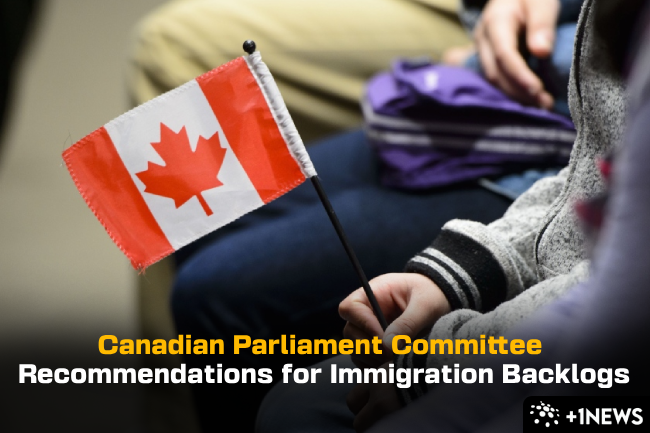The Citizenship and Immigration Committee (CIMM), consisting of 12 parliament members, recently examined the backlog and processing times at Immigration Refugees and Citizenship Canada (IRCC).
In 2022, there were nearly 2.7 million immigration applications due to COVID-19 measures. The committee motioned on February 1, 2022, to study these backlogs and processing times across all immigration streams at IRCC.
The CIMM report titled “In Demand Yet Unprocessed: Endemic Immigration Backlogs,” released on December 14, provides recommendations to enhance Canada’s immigration system.
It focuses on creating accurate processing times, transitioning to digital platforms, ensuring transparency, addressing resource misallocation, and meeting service standards.
Jump to:
Accurate and Equitable Processing Times
The report suggests IRCC establish a deadline to clear the backlog, ensuring accountability for all applications. It highlights the need to avoid shelving older applications for appearances. The committee suggests posting accurate processing times online for transparency.
In a recent strategy document called An Immigration System for Canada’s Future, IRCC acknowledges the need to improve the accuracy of processing times. This aligns with the committee’s recommendations.
Moving to Digital Platforms
The immigration department is working on making the immigration system more modern and digital. The committee report notes that while moving online has helped, there were some issues that need fixing.
They suggest the immigration department should check for and fix any problems with their online system. They also recommend involving users in troubleshooting common glitches and technical issues.
Transparency:
The committee emphasizes the importance of transparency in the immigration process. It proposes the creation of an ombudsperson to oversee program improvements and ensure that changes are effectively implemented.
Currently, the report notes that identified issues may not have legal or practical requirements for resolution.
Throughout the report, there’s a recurring call for increased communication with applicants. The committee urges IRCC to keep applicants informed about their application status and decision-making process.
For instance, allowing access to immigration officer notes on the final decision could facilitate issue resolution. Currently, applicants must file a request to obtain such notes, adding unnecessary delays to the process.
Misallocation of Resources
In addressing the backlog issue, the committee recommends not only hiring more staff but also assessing how resources are allocated and utilized. Former immigration minister Sean Fraser emphasizes the time required to hire and train personnel to meet the challenges.
The report points out that the backlog issue, highlighted in a recent Auditor General report, pointing to a misallocation of resources and excessive workloads in regional offices.
The report specifically mentions overwhelmed offices in Dakar and New Delhi dealing with a high volume of temporary resident visa requests. The Dakar office processes applications for 16 countries, contributing to processing volume challenges.
Service Standards and Backlog
Understanding when an application is considered a backlog is crucial. An application is labeled as such if it surpasses service standards – the time IRCC expects for processing. Different types of applications have different service standards.
For instance, Express Entry applications should be processed within six months, and family class sponsorship applications should be processed within 12 months.
IRCC aims to process 80% of all applications within these standards.
In response to a recent report by Canada’s Auditor General, Immigration Minister Marc Miller suggests that many lines of business are returning to service standards, indicating progress.
Next Steps by the Government
The government must respond to the report within 120 days. The response can take various forms, and the government decides whether to act on the CIMM report’s recommendations.
These recommendations aim to improve Canada’s immigration system by addressing delays, enhancing transparency, and optimizing resource allocation. The government’s response will determine the impact on future immigration processes.














